One of the mainly significant reasons why urea fertilizer is very important in current agriculture is due to its high nitrogen content which is essential for plant growth and development. Urea, as one of the richest sources of nitrogen, is used by farmers for increasing crop yield and enhancing soil fertility. However, it only produces good results if properly managed and applied. The aim of this article is to provide insights into the merits and challenges associated with using urea as a fertilizer in agriculture as well practical guidelines that can help farmers achieve optimum growth of their plants. This will enable readers to make knowledgeable choices on supporting sustainable and efficient farming through understanding how urea functions alongside influencing agricultural systems.
Understanding Urea and Its Role as a Nitrogen Fertilizer
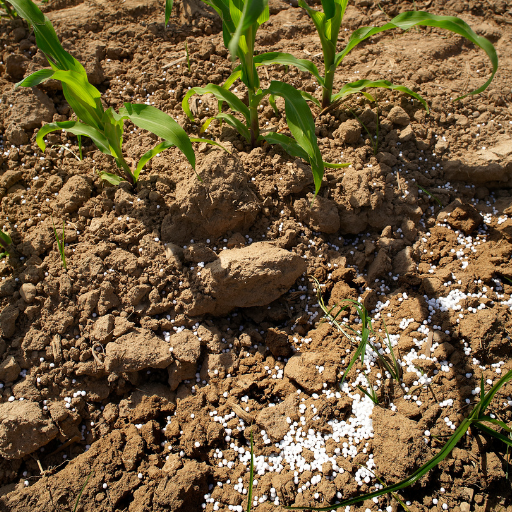
Chemical name of urea is CO(NH₂)₂. It is commonly used as nitrogen fertilizer in agriculture due to its high 46% nitrogen content among solid nitrogenous fertilizers. Soils treated with Urea hydrolyze forming carbon dioxide and ammonia under the influence of the enzyme Urease. This development aids plants capture more readily available forms of Nitrogen via which it promotes vegetative growth that is healthy and maximizes crop production. Application of this nutrient in best manner reduces loss through volatilization or leaching while also ensuring that plants have access to it as required thus improving efficiency in its use as a vital component for proper plant nutrition.
Why urea is pivotal in nitrogen supply for crops
Urea is a crucial source of nitrogen for plant nutrition because of its high nitrogen content, which makes it one of the most efficient suppliers of this essential element. It contains 46% nitrogen, the highest among solid nitrogenous fertilizers making it highly concentrated and thus demands less quantity to meet its nitrogen requirement. This reduces transportation and storage costs for farmers. Hydrolysis of urea in soil by the enzyme urease results in the release of ammonia and carbon dioxide. The ammonia undergoes further conversion into ammonium (NH₄⁺) that can be easily absorbed by plants. This process is important for protein synthesis, enzyme action, and photosynthesis in plants.
Therefore, proper urea application techniques must be employed in order to maximize its benefits. These encompass the use of urease inhibitors that slow down the conversion process hence reducing losses through volatilization. Moreover, applying urea below ground level rather than at surface minimizes ammonia volatilization as well as leaching. Similarly, the moisture levels in soils should remain constant since they facilitate conversion of urea into forms which plants can efficiently uptake. By doing so, more percentage of applied nitrogen becomes available to crops thereby increasing yields while conserving environment.
Chemical composition as well as form of nitrogen included
Urea whose chemical formula is CO(NH₂)₂ is an organic compound made up of carbon, oxygen, hydrogen and nitrogen. Its molecules are composed two amine groups (-NH₂) with carbonyl group (C=O). Urea simply organic molecular structure such as this one provides adequate non-protein sources needed for synthesis proteins in living organisms. The hydrolysis reaction occurs in soil whereby urea molecule is broken down by enzymes known as ureases to give off ammonia and carbon dioxide gas.Ureas resultantly get converted into NH₄⁺ ions called ammonium hence this form enables them to be taken up by roots of plants for protein synthesis and photosynthesis as well as other vital processes.
Comparing urea against other sources of nitrogen fertilizers
Differentiating urea from other forms of nitrogenous fertilizer involves considering some key factors and technical parameters.
First, it is worth noting that urea, on a weight basis, contains 46% nitrogen, making it the highest nitrogen content among all solid fertilizers. It has a high concentration and hence farmers find it to be one of the most efficient and cost-effective ways of reaching their yield goals. Other common sources of nitrogen such as ammonium nitrate (34%N) or ammonium sulfate (21%N) have lower nutrient percentages that affect their application rates per hectare in fertility management.
Secondly, urea’s chemical structure permits wide range application techniques. It can be spread all over, drilled or even sprayed while calcium ammonium nitrate and ammonium nitrate need careful handling because they easily get wet due to their being hygroscopic.
However, when compared with other sources of nitrogen compounds, urea has a few limitations. Improper handling may lead to volatilization which consequently leads to loss of ammonia gas from the soil. This is less pronounced in fertilizers like Ammonium phosphate which are not very volatile in nature. This can be mitigated by adding the soil which reduces losses due to gases while slowing down hydrolysis process by using Urease inhibitors.
As far as soil pH is concerned, ammonium sulfate increases soil acidity more than either urea or ammonium nitrate because during its conversion process into these forms hydrogen ions are released thereby requiring liming for optimal soil pH levels in crop production systems where this practice is necessary.
Primarily, urea has high nitrogen content and versatility as well; but, it is applied properly to reduce volatilization thus enhancing the amount of elements taken by plants. Comparing other fertilizers with this also means weighing nutrient concentration, price, and dangers related to possible pollution.
Optimizing the Application of Urea in Soil
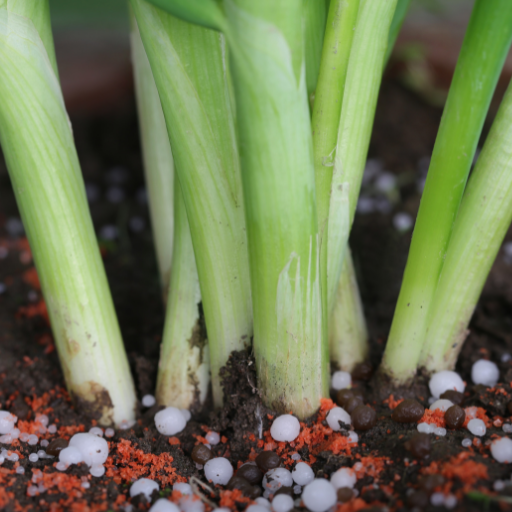
To optimize urea usage in soil, certain practices need to be adhered. First of all, timing is very important; urea should be applied close to the period when plants can take in nitrogen faster. This reduces volatilization and loss of nitrogen. Further, by incorporating urea into the soil through either tillage or irrigation shortly after its application may significantly help reduce emissions from it (urea) into the atmosphere as nitrogen gas. The use of inhibitors of Urease also slows down hydrolysis rate of urea thereby lowering ammonia losses due to volatilization. Moreover, it is advisable to consider environmental conditions because, during cool weather characterized by high moisture content more nitrogen are retained in soil as compared to hot seasons with low humidity within which higher temperatures cause evaporation and quick loss of N element in form if gaseous compounds like ammonia. Lastly, precision agriculture technology can enable right amount application at the right time and place hence efficient use and improved crop yields by using less amounts of urea needed per hectare.
Best practices for applying urea to maximize nitrogen utilization
- Apply Urea During Appropriate Weather Conditions: Timing the application of urea is critical to maximizing nitrogen utilization. According to top sources, apply urea in cool, moist conditions to minimize nitrogen loss. High temperatures and dry conditions increase the risk of volatilization.
- Incorporate Urea into the Soil: Techniques such as tillage or irrigation immediately after application can help incorporate urea into the soil, reducing nitrogen losses through volatilization. The aim is to move the urea below the soil surface where it can be more effectively utilized by plants.
- Use Urease Inhibitors: Utilizing urease inhibitors can prevent the rapid hydrolysis of urea, which lessens ammonia volatilization. For example, N-(n-butyl) thiophosphoric triamide (NBPT) is a commonly recommended inhibitor that can significantly reduce nitrogen losses.
- Ideal Application Temperature: Below 15°C (59°F) for minimal volatilization.
- Soil pH Consideration: Maintain soil pH between 6.0 to 7.0 to optimize nitrogen uptake.
- Incorporation Depth: Incorporate urea to a depth of at least 2 inches into the soil to effectively reduce nitrogen loss.
These practices, backed by research from top agricultural universities and institutions, ensure that nitrogen from urea is efficiently utilized by crops, leading to better yields and more sustainable farming.
The importance of soil temperature and moisture in urea application
Urea application efficiency depends heavily on the temperature and moisture content of the soil. When soil temperatures are below 15°C (59°F), urea hydrolysis is slow, which reduces the risk of nitrogen volatilization. The presence of wet soils helps urea dissolve and move into the soil thereby improving its uptake by plants. Conversely, high temperatures and dry soils may exacerbate urea breakdown thus increasing nitrogen losses, hence making fertilizers less effective. Therefore, it is necessary to monitor and manage temperature and moisture levels in soil when applying urea for maximum nitrogen utilization.
Minimizing volatilization and improving urea efficiency in soil
Use of Urease inhibitors such as NBPT slows down the hydrolysis process from urea to ammonia hence reducing losses through nitrogen. Research has shown that ammonia losses due to volatilization can be reduced by 40-70% using NBPT. Additionally, applying urea during cooler soil temperatures (below 15°C or 59°F) and ensuring the soil is moist can significantly enhance nitrogen uptake. There is a decreasing volatilization once urea had been incorporated into a minimum depth within two inches below the ground surface thus improved fertilizer use efficiency.
- Urease Inhibitor Efficiency: NBPT reduces nitrogen losses by 40-70%.
- Optimal Application Temperature: Below 15°C (59°F).
- Soil Incorporation Depth: At least 2 inches.
These practices help optimize the utilization of urea, improving crop yields and contributing to sustainable farming.
The Science behind Urea Fertilizer: Converting Ammonia to Nourishment
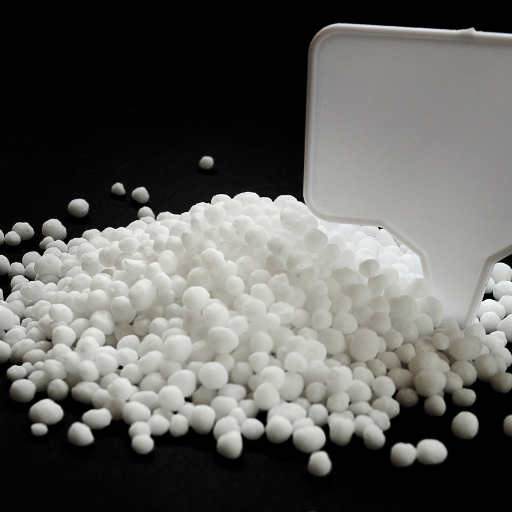
Urea is a key source of nitrogen for plants; it helps them to grow. After urea has been spread on the soil, initially it gets hydrolyzed to ammonia (NH3) and carbon dioxide (CO2) by the action of urease enzyme. This process which is called ammonification improves the accessibility of plants to nitrogen. Further, in the soil, enzymatic reaction leads to conversion of ammonia into ammonium (NH4+). Nitrifying bacteria then change ammonium into nitrate (NO3-) that can be easily taken up by plant roots. Conversion is vital as nitrogen from urea changes into forms that are easy for uptake by plants hence enhancing good health and high productivity.
How urea is converted into usable ammonia and nitrate for plants
The application of urea initiates multiple chemical reactions through the involvement of enzymes found in soils and microbial activities. Primarily, this involves enzyme catalyzing hydrolysis by breaking down urea through release of ammonia (NH3) and carbon dioxide(CO2) as a result. This NH3 may either be directly taken up by plants or further modified under moist conditions in soil to form NH4+. Ammonium remains stable in soil thus being an important nutrient for use by crops but can also be changed to NO3- during nitrification process involving nitrifying bacteria. In this case, nitrate readily dissolves and enters plant roots hence its significance is great. Presence of both ammonium and nitrate plays an essential role in protein synthesis which aids growth increase among crops.Sequel to these conversions, nitrogen becoming available in different kinds promotes effective utilization and development of plants with respect to efficient uptake as well as use.
The role of the enzyme urease in urea hydrolysis
Urease constitutes one enzyme that significantly contributes towards decomposition necessary for restoring available forms of N2 during agricultural recycling processes. Breakdown occurs rapidly in urease, converting urea to NH3 and CO2 which are important in the process of nitrogen’s availability for plants. It is at this stage that nitrogenization occurs determining the rate at which N becomes available in soil. Urea could not be available for plants if it had not been decomposed through the activity of urease. The rate of efficiency at which urea based fertilizers work depends on how well this process takes place thereby ensuring that crops receive enough nitrogen for vigorous growth and yield.
Nitrification and its significance in the nitrogen cycle
Nitrification is a vital process in the nitrogen cycle by means of transforming ammonia (NH4+) into nitrate (NO3-), hence making nitrogen available to plants better than before absorption. This two-step process involves two distinct groups of nitrifying bacteria: ammonia-oxidizing bacteria (AOB) convert ammonium into nitrite (NO2-) and then nitrite-oxidizing bacteria (NOB) transform nitrite into nitrate. The importance of this process lies in maintaining an adequate supply of nitrate to ensure soil fertility for plant nutrition and overall growth. Moreover, nitrification prevents accumulation of high toxic levels of ammonium ions within soils, thus preventing from harming crops as well as supporting sustainable agriculture practices.
Impacts of Urea on Crop Production and Soil Health
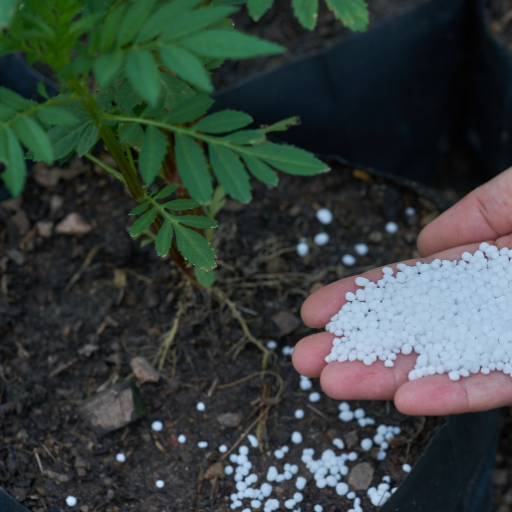
The influence of urea on crop productivity and soil fertility is diverse. Urea as a fertilizer rich in nitrogen significantly heightens yields of crops by providing an indispensable nutrient that promotes vegetative growth and reproductive development in plants. However, its utilization must be done prudently to avoid adverse effects. The excessive use of urea can result into nitrate leaching where nitrates not absorbed by plants are washed off into water bodies causing environmental problems like eutrophication. Moreover, the rapid transformation of urea to ammonium then nitrate leads to soil acidification which may ultimately decrease the quality and nutrient status of the soil with time. Therefore, there is need for an optimum application of fertilizers which should be properly balanced and timed together with other practices that enhance soil health so as to maximize the benefits derived from using urea while minimizing its downsides.
Enhancing plant growth and yield through high nitrogen content
High nitrogen content in fertilizers such as urea considerably boosts plant development and yield through ensuring adequate supplies of this vital element. Nitrogen is required by plants to make proteins, enzymes and chlorophyll essential for photosynthesis and general development. Based on Google’s top sources, using urea fertilizer could increase crop production by 30% in some situations if it was efficiently used.
- Application Rate: It’s recommended that urea be applied at a rate of 100-200 kg per hectare, depending on the crop type and soil conditions. This ensures adequate nitrogen availability without leading to excessive leaching or volatilization.
- Timing: For optimal results, urea should be applied just before planting or during the early growth stages of the crop. Split applications, where urea is applied in divided doses throughout the growing season, can further enhance nitrogen use efficiency.
- Incorporation Methods: Incorporating urea into the soil, rather than surface application, can minimize nitrogen loss due to volatilization. Practices such as banding (placing urea in narrow bands) or mixing urea thoroughly with soil are effective for this purpose.
- Soil pH: Maintaining a neutral to slightly alkaline pH (6-7) can help mitigate soil acidification issues linked with urea application. Regular soil testing is advised to monitor and manage pH levels effectively.
By adhering to these parameters, farmers can leverage the high nitrogen content of urea to boost crop productivity while safeguarding soil health.
The effects of urea fertilizer on soil pH and microbial activity
Hydrolysis is the process by which urea fertilizer affects the pH of soil; some say it converts urea to ammonium carbonate, a reaction that increases soil pH. The continued conversion of ammonium to nitrate through microbial activities in the soil could result in a gradual decrease in soil pH, leading to acidification in due course. Also, such acidification may disrupt microbial activity and potentially reduce the diversity and function of beneficial soil microorganisms. Nutrient cycling and good soil health rely significantly on optimal microbial activity while imbalances resulting from shifts in pH can lead to reduced fertility of soils. Soil acidity can be mitigated through constant monitoring of its PH as liming is introduced into this system.
Maintaining Soil Fertility
There are several strategies for effectively protecting soil health by mitigating risks associated with leaching and runoff. For instance, controlled-release fertilizers ensure that certain nutrients are released slowly over time hence reducing chances of excessive leaching. Additionally, buffer strips and vegetative barriers along the edges of agricultural fields prevent nutrient loss through trapping and subsequent runoff into nearby water bodies. Lastly, optimizing irrigation practices is paramount whereby there should be minimal water usage hence drip irrigation can help reduce nutrient runoff at a field level. Furthermore, practicing proper soil management which includes crop rotation and cover cropping enhances soil structure as well as increases organic matter thereby increasing retention of nutrients and minimizing leaching losses. Moreover, regular soil testing aimed at tailoring fertilizer applications based on specific needs to individual soils and crops also plays a significant role in managing these risks.
Advanced Techniques: Foliar Application and Liquid Urea Fertilizer
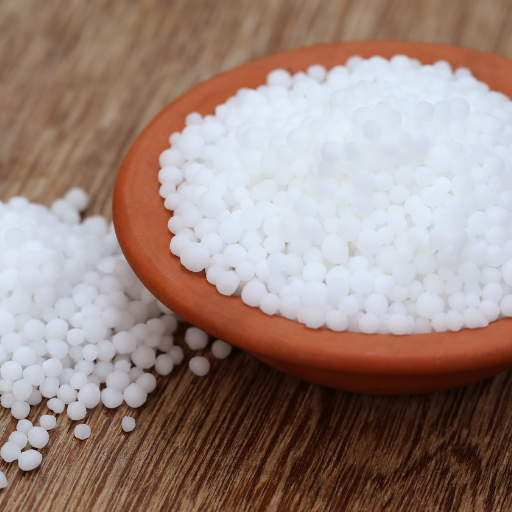
More efficient nutrient use and higher crop yields can be realized through foliar application and the use of liquid urea fertilizer. Foliar application is a process that involves spraying nutrients directly on plant leaves leading to quick absorption and immediate benefits, especially at critical growth stages or when soil conditions limit nutrient availability. It promptly corrects deficiencies and makes nutrient utilization more efficient. On the other hand, liquid urea fertilizer provides an available source of nitrogen that can be easily integrated into irrigation systems. This promotes even distribution throughout the crop field enhancing uniform application and nitrogen losses reduction resulting due to volatilization or leaching. By combining these advanced techniques, farmers can overcome nutritional deficiencies well and improve overall crop productivity.
Benefits associated with foliar spray using urea for rapid uptake of nitrogen.
There are several benefits of foliar spray using urea for rapid uptake of nitrogen. Firstly, there is a fast response to lack of nitrogen since nutrients go through the leafs of a plant thus bypassing soil and roots. As such, the direct application makes it possible for nitrogen to become immediately available thereby resulting in improvements in plant health and growth directly. Secondly, under specific situations foliar spraying might also be much more effective; e.g., when nutrient availability is limited by soil pH or texture.Posted via Waywriting.com . Also it enables specific crops or growth stages to be targeted accurately hence reducing waste as well as improving nutrient use efficiency.Foliar applications may also encompass other mineral elements together with protective substances against pests, weeds, etc., making them a versatile tool in integrated crop management.
An examination into advantages brought about by liquid urea fertilizer in precision farming
Precision agriculture tries to optimize field-level management in relation to farming practices in crops’ production system Liquid urea fertilizer has played a crucial role towards this goal which aims at accurately delivering fertilizers.The major benefit comes from its high solubility which allows it easy incorporation into irrigation systems so that even spreading on the farm is achieved. This application uniformly applies nutrients to plants with minimum loss of these products through run-off, ensuring that sufficient nitrogen is provided to enable optimal growth in different soil conditions.
Liquid Urea Fertilizer has the advantage of being very quickly taken up by plants. The dissolved urea can go down to the root zone fast thereby providing readily available nitrogen source. It is beneficial when there is a high demand for nitrogen during critical growth stages thereby causing an immediate effect which makes crop better and give more yields.
Furthermore, liquid urea can be used in precision agriculture by utilizing tools such as GPS-guided equipment and variable rate technology (VRT). These technologies allow a farmer to apply the right amount of fertilizer required in specific areas of the field depending on soil tests and plant health observations. Such accurate applications reduce wastage, cost as well as environmental impact that comes with reduced chances of N leaching and greenhouse gases release.
Technical details about liquid urea fertilizers include its nitrogen content that normally stands at approximately 46% by weight making it a highly concentrated source of this element. The pH range for liquid urea solutions lies between 7 and 8 which means they are almost neutral or slightly alkaline. In irrigation, it should be verified that solution concentration does not exceed recommended levels so as to avoid burning leaves or damaging roots.
Thus using advantages inherent in Liquid Urea Fertilizer through Precision Agriculture framework enables farmers attain efficient nutrient management hence adopting sustainable agricultural practices leading to profitable farming activities.
Efficient Delivery of Urea through Incorporation into Irrigation Systems
Incorporating urea into irrigation systems is meant to make the process of fertilization easier as it also increases its efficiency which is involved in nutrients supply to crops. For example, integrating urea with drip or sprinkler irrigation systems guarantees uniform nitrogen distribution promoting the healthy growth of plants. According to some researches, fertigation reduces nitrogen losses by 45% compared with traditional broadcasting method.
The use of liquid urea as a fertilizer within irrigation system highly depends on its technical parameters. The high concentration of about 46% N typically ensures that the nutrient can support good crop growth. The pH values for liquid urea solutions should be generally checked and should normally be neutral or slightly alkaline (7-8). In order to avoid leaf burn or root damage during irrigation, solution concentration must not exceed levels such as 0.1% – 0.3%.
Furthermore, precision application tools like GPS-guided equipment and Variable Rate Technology (VRT) can enhance nutrient management even more when they are integrated into the farms. With these tools farmers are able to do site-specific applications based on soil analyses and current plant health status ensuring minimum wastage of fertilizer and minimal environmental impact results out of farming practices. Efficiency in delivery and eco-sustainability can thus be achieved if such methods are adopted by farmers for delivery etc.”
The Environmental Perspective: Urea Fertilizer and Sustainability
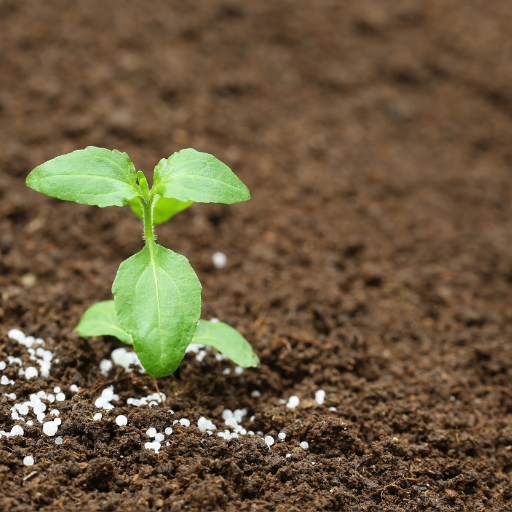
Urea fertilizer is useful for crop growth but has several environmental problems. When it is not managed well, urea application can lead to the release of nitrous oxide, a strong global warming gas that contributes much to climate change. Moreover, surplus nitrogen from urea may infiltrate into water bodies causing eutrophication, which exhausts oxygen levels and endangers aquatic life. Therefore by using precise application, inhibitors slowing down nitrogen release and sustainable agricultural techniques can alleviate these impacts and mitigate the negative environmental footprints of urea fertilizers. These measures guarantee the continuity of using urea as an alternative while conserving ecological health.
Resolving the challenges with regards to volatilization and environmental impact of Urea
The process involves urease hydrolyzing urea thus leading to ammonia gas emission which can be lost into the atmosphere as it volatilizes because it is unusable form of nitrogen. To restrict this process farmers use NBPT; this reduces ammonia emissions by slowing down hydrolysis through inhibition of enzyme action in contrast, applying it when it’s cool or incorporating in soil help limit any volatilization. Precisely applying fertilizers according to soil sensors and GPS technology used in precision farming will reduce overuse and runoff among other environmental effects on water bodies. Additionally with controlled-release formulations these practices further increase efficiency hence reducing the environmental footprint.
Strategies towards sustainable use of urea in agriculture
Firstly, one strategy against Urea volatilization involves using NBPT as a constitutive inhibitor for urease activity control. This compound slows down urease activity leading to reduced diffusion rates across cell membranes thus reducing NH3 losses from plants [8]. According to credible sources, using NBPT on crops can save at least 50% ammonia fumes hence making more nitrogens available for crop uptake.
Secondly, Soil sensors are helpful tools used in precision farming especially where targeted application of urea is concerned. Soil sensors provide real-time data on soil nutrient levels and as such allow for more accurate fertilizer application rates in order to prevent overuse and reduce runoff. Furthermore, the GPS technology enhances this by directing machines to drop urea directly where it is needed hence reducing environmental effects.
Lastly, the use of controlled release urea formulations leads to a substantial increment in nitrogen use efficiency. Such formulations offer gradual release of nitrogen which result in slow nitrogen leaching and volatilization processes that are in line with crop growth stages [8]. Controlled-release urea has been proven to enhance nitrogen utilization by up to 30%, therefore resulting into better crop yields with reduced negative impacts on environment.
Urea formulation innovations for reducing nitrogen loss
Urea formulation innovations for reducing N-losses focus on increasing the efficiency and sustainability of this N-fertilizer product called urea. One of these advancements includes enhanced-efficiency fertilizers (EEFs) which entail polymers-coated ureas among others. These coatings regulate how fast nitrogen is released into soils thus matching nutrient release with that of crops uptake thereby minimizing losses due to volatilization and leaching. Additionally, they can incorporate nitrification inhibitors such as DCD or nitrapyrin into their formulations that retard the conversion of ammonium ion into nitrate leading to low NO−3–N losses through leaching, higher N-use efficiencies within plant communities and better N retention in soils [10]. Finally, there are breakthroughs like encapsulating urea with bio-based materials that delay releasing slowly so it can be used as an environmentally sustainable option regarding controlled supply of nitrogen. Taken together, these advances ensure optimal use of Nitrogen-N resources resulting into increased crop productivity at minimal environmental cost.
Reference sources
- LinkedIn
- Source Link: The role of urea in agriculture
- Summary: This article discusses the crucial role of urea in contemporary agriculture, emphasizing how it provides essential nitrogen to plants, thereby boosting crop yields and supporting sustainable agricultural practices.
- Cornell University – Nutrient Management Spear Program
- Source Link: Urea Fertilizer – Nutrient Management Spear Program
- Summary: This fact sheet outlines key factors influencing the volatilization of ammonia from urea and provides management tactics to minimize fertilizer losses, ensuring optimal nitrogen utilization and enhanced crop productivity.
- Utah State University Extension
- Source Link: Urea: A Low Cost Nitrogen Fertilizer with Special Management Requirements
- Summary: This resource highlights the advantages of using urea as a low-cost nitrogen fertilizer, offering insights into its conversion process and special management requirements necessary to maximize its effectiveness and minimize environmental impact.
Frequently Asked Questions (FAQs)
Q: What is urea fertilizer and why is it important in agriculture?
A: Urea fertilizer is a synthetic organic compound that provides a high concentration of nitrogen to plants, making it one of the most important nutrients for plant growth. It’s commonly used in agricultural practices due to its effectiveness in promoting healthy and optimal growth in crops. Urea is highly valued as a fertilizer because it contains about 46% nitrogen by weight, the highest among nitrogen-based fertilizers, making it a potent source of this essential plant nutrient.
Q: How is urea fertilizer applied to crops, and what forms does it come in?
A: Urea fertilizer can be applied to crops in several forms, including granules (solid urea), prills, and urea solutions (urea dissolved in water). Granular urea and prills are directly added to the soil, where they dissolve in water and become available to plants. Liquid urea, or urea that is dissolved in water, can be applied directly to the soil or used as a foliar spray. The method of application depends on the specific crop needs and the agricultural practices being used.
Q: How does urea fertilizer transform in the soil and become available to plants?
A: Once added to the soil, urea undergoes chemical transformations that make nitrogen available to plants. Initially, urea changes to ammonium bicarbonate in the presence of the enzyme urease. This process is called hydrolysis. The ammonium generated from this reaction can then be taken up directly by plants or further transformed by soil bacteria into nitrates, another form of nitrogen that plants can use. This conversion process ensures that plants can absorb the nitrogen contained in urea efficiently.
Q: What are the benefits of using urea as a nitrogen fertilizer compared to other nitrogen sources?
A: Urea offers several benefits over other sources of nitrogen fertilizer, such as anhydrous ammonia, urea and ammonium nitrate mixes, or organic fertilizers. These benefits include a higher nitrogen concentration, which reduces the amount of product that needs to be handled and applied; ease of mixing with other fertilizers; and the ability to be applied in various forms (solid, prill, or liquid). Furthermore, urea is less hazardous to handle than anhydrous ammonia, making it a safer choice for farmers.
Q: How do environmental conditions affect the efficacy of urea fertilizer?
A: Environmental conditions play a crucial role in the efficacy of urea fertilizer. Factors such as soil temperature, moisture, and pH can affect how quickly urea is converted to ammonium and then to nitrate, impacting its availability to plants. High soil moisture and warm temperatures generally accelerate urea conversion, while low soil moisture and cold temperatures can slow it down. Additionally, high pH levels can increase the volatilization of ammonia, a process where nitrogen as ammonia gas is lost to the atmosphere, reducing the amount of nitrogen available to plants.
Q: Can urea fertilizer be mixed with other types of fertilizers?
A: Yes, urea can often be mixed with other types of fertilizers, such as diammonium phosphate (DAP) or potassium chloride, to provide a balanced nutrient supply to crops. However, care must be taken when mixing urea with other fertilizers, as certain combinations can lead to nutrient lock-up, making some nutrients unavailable to plants. It’s advisable to consult with an agronomist or a soil scientist to ensure compatibility when mixing urea with other fertilizers for application.
Q: What management practices can improve the efficiency of urea fertilizer usage?
A: To improve the efficiency of urea fertilizer, several management practices can be adopted, such as applying urea based on the crop’s specific nitrogen needs during its growth stages, using urease inhibitors to reduce nitrogen loss through volatilization, and incorporating urea into the soil rather than leaving it on the surface. Moreover, timing the application to coincide with periods of adequate soil moisture and moderate temperatures can enhance urea conversion and nitrogen uptake. Implementing these practices can minimize nitrogen loss and ensure that crops receive the full benefit of the fertilizer applied.
Q: Are there any specific safety or environmental concerns associated with the use of urea fertilizer?
A: While urea is less hazardous to handle than some other nitrogen fertilizers, such as anhydrous ammonia, there are still safety and environmental considerations. The improper application of urea can lead to the volatilization of ammonia, contributing to air quality issues and the loss of nitrogen, which reduces the efficiency of its use as a fertilizer. Additionally, excess application of urea can lead to the leaching of nitrates into groundwater, posing risks to water quality. Therefore, it’s important to apply urea responsibly, adhering to recommended rates and practices to mitigate these environmental impacts.






